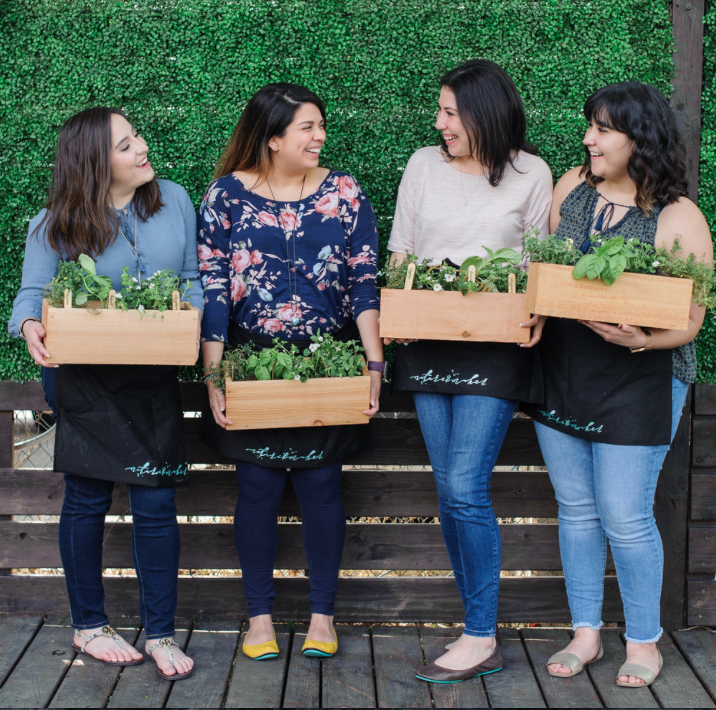Herbs Are For Everybody
Jan 06, 2023Herbs are one of the easiest and most rewarding things to grow for a backyard gardener. Herbs can be grown with vegetables in the garden or in pots as gorgeous decoration for your porch or patio. Today, I am going to tell you all about herbs...how to grow them, how to harvest them, and how to enjoy them the whole season long.
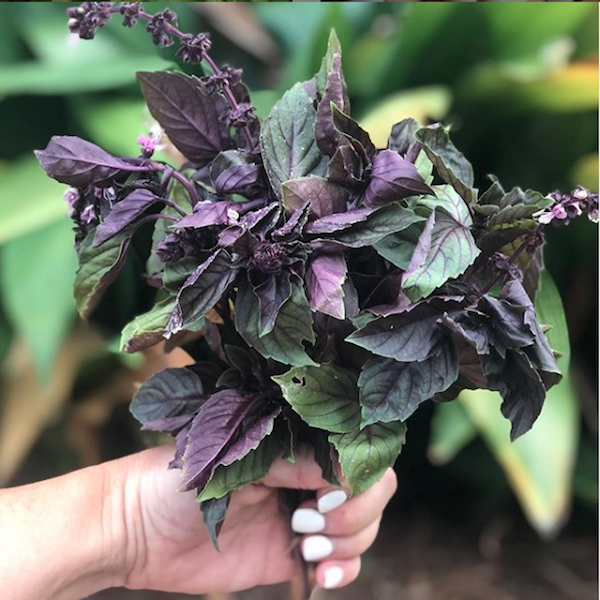
Growing Herbs
When growing herbs, the first thing to remember is herbs and spices are not the same thing. Herbs are the green fleshy parts of the plants, and species are the seeds, bark, and stems. For example, cilantro is an herb used in many Mexican dishes. But coriander is a spice which refers to the seeds of the cilantro plant. Herbs and spices come from the same plant, but they are different parts of the plant.
Second, with herbs, a little goes a long way. Herbs are prolific. One plant is all you need of each herb you want to grow. Herbs can also be invasive. They will take over their container and smother out their neighbors, so give your herbs plenty of room, and plant them with some companions that enjoy their company.
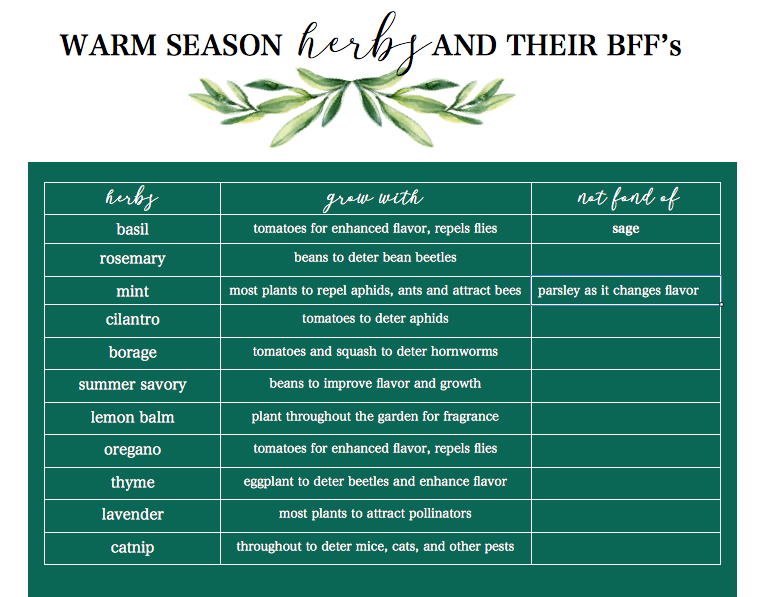
The herbs above love warm weather and thrive in dry conditions, so make sure you plant some of these in your garden soon. You will see that they have many benefits, in addition to being delicious. Herbs are a huge part of the companion plan that has been so beneficial to my garden for so many years. Herbs will bring in the pollinators, add so much beauty to your space, and smell amazing. And they deter pests! Yes, please!!
Growing Herbs in a Container
Maybe you don't have room in the garden for all of the herbs you want to grow. An container herb garden might be just what you need. I love to plant containers with herbs for the patio and porch. They grow voraciously and fill in so much faster than ornamental flowering plants, and they are useful. Like all plants, different herbs require different sunlight and water requirements. Below you will find a chart of my favorite herbs that grow well together. Plant these in a large pot and make a beautiful container for your porch or patio. Also, containers look amazing in raised bed gardens. They add dimension to the beds and as the herbs grow and overflow their pots the beauty will just be the cherry on top of the backyard garden.
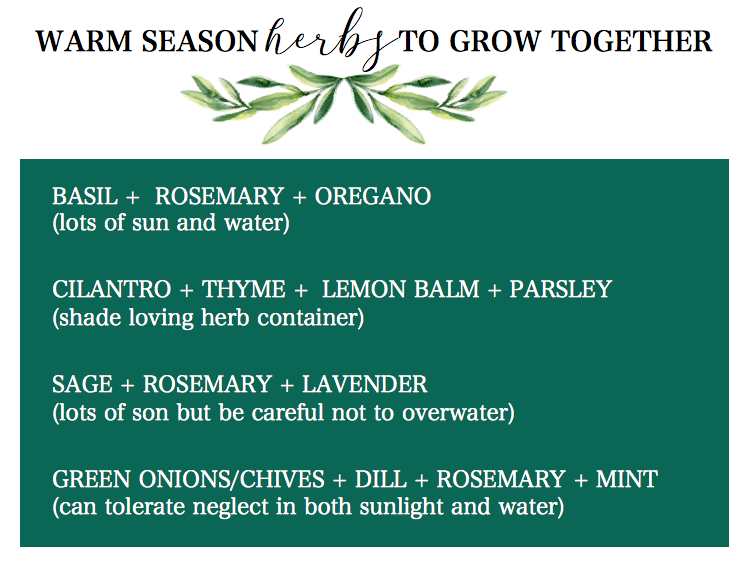
How To Put Together An Herb Container
When arranging the herbs in your container, the first thing to think about is how tall the plants will get. You want to make sure that your pot is big enough to sustain the weight of your tallest herb. Although hopefully you will be trimming your herbs often, you don't want to come home to a spilled out pot of herbs because it got too top heavy.
In addition to determining height and pot size, you will want to make sure you plant upright herbs in the back of your pot. Herbs like basil, lavender, chives, and dill will grow in an upright posture, so you want to plant them in the back of your pot. Herbs like rosemary, oregano, lemon balm, parsley, and cilantro grow in a shrubby type form. As you continue to prune and trim and use your herbs, you will continue to encourage that shrubby form. Plant these in the middle and front of the pot. Finally, herbs like mint, thyme, and sage will grow in a compact or trailing form that makes them perfect for the front of your pot. They will stay very close to the soil, but some will actually spill out of the front of the pot, making a beautiful show on your porch or patio. Planting them up front also makes them easy to trim and prune as you need them. Just a little snip off the ends and you get the herbs you need or want, and the herbs get a little haircut that will encourage them to just keep growing.
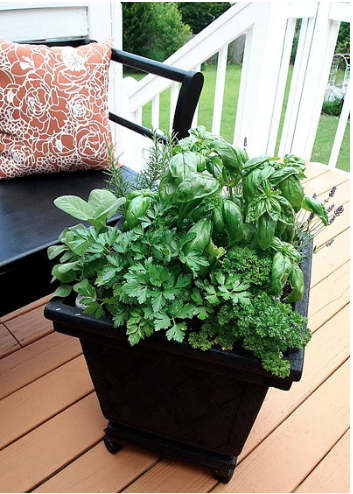
How To Trim Herbs To Keep Them Growing
When harvesting herbs, you have to shift your thinking a little bit, but once you know the tricks, harvesting herbs all season long will be a piece of cake for you.
Harvest from the top to the bottom
Counterintuitive, but the best thing to do is to prune the leaves at the top, not the bottom. The big leaves on the bottom act as a sturdy base.
Take basil for example. When they are only a few inches tall, you want to prune, or “pinch” off the newest leaves at the top from the stem. It may seem weird, leaving the big, full leaves to grow at the bottom. But you need them to act as the basis of your plants to absorb up all the sun. Plus, the leaves at the top are tender and delicious!
Tipping The Top
Remove the end 1-2 inches of your plant's stem. This is called "tipping." That exposed end will split and grow into two separate branches. Once you get into the habit of doing that, your plant will become bushier, creating more foliage for you to trim as you need it.
Trim at the Stem
Leafier plants like basil can become bitter quickly after blossoming, so pruning is particularly important. When pruning these types of plants, cut them right where the leaf meets the stem to prevent blooming.
Woodier herbs, like rosemary and thyme, should be trimmed so that they don't become too woody (as they generally do with age), as no new leaves will grow. As soon as you start to see new growth, trim some of the leaves back at the stem here as well. This will encourage new leaves to grow, which will in turn keep the whole plant growing.
If you want to do more in the garden this season but need some help and encouragement, check out my FREE workshop on January 28th called "Garden Like A Wild Child." I am going to show you three ways to increase your success in your backyard garden. This is garden gold!! Join us!
You can get all the details here!! I promise you, it will be time well spent as you begin to dream of your spring garden possibilities!!
